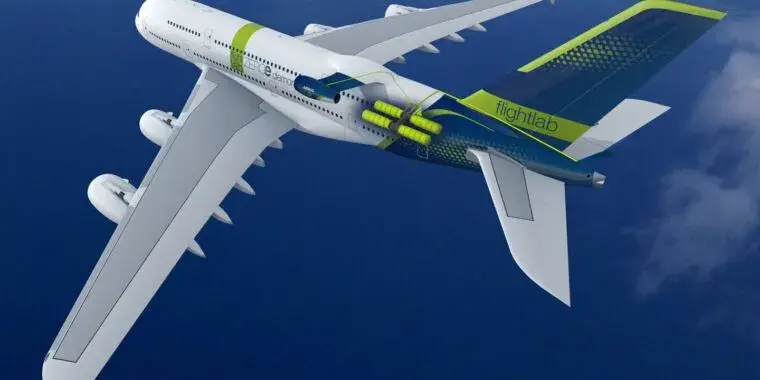- cross-posted to:
- technology@lemmy.world
- cross-posted to:
- technology@lemmy.world
I’m not super knowledgeable in this area, but this seems like a great idea. I remember when hydrogen cars first came out, and the biggest issue was that there was almost nowhere to refuel. The nearest fueling station to where I lived was about an hour away. With planes, the airports will have fueling stations. IIRC, it’s significantly better for the environment than existing jet fuel. The range was pretty good for cars, so I assume it will be for planes as well.
Would it be safer than combustible jet fuel?
Hydrogen works pretty well for aviation, though there are three main challenges they’re still working on: size, materals, and fuel source.
Hydrogen is nice and lightweight, but the tanks and plumbing take up a lot of space, which cuts into cargo volume, basically limiting the range if you want to take passengers with you.
The second issue is that fuel cells currently require quite a lot of platinum, and the PEM electrolysis also requires a lot of PGMs and rare metals like Iridium. The material scientists are working on this, and I figure if they can take the cobalt out of batteries, they can take the platinum out of fuel cells.
The question that comes up the most when talking about hydrogen is where the hydrogen itself comes from. Right now, it’s mostly made by steam methane reformation or similar fossil fuel processing, which is nearly as bad for the environment as burning the fossil fuel directly. But there are promising advances in renewable electrolysis (such as taking advantage of peak solar for “free” electricity) which are closing the gap between SMR and renewable H2. It’ll never be as cheap as jet fuel, but it’s at least economically feasible.
deleted by creator
I’m not 100% convinced by some of the terrestrial applications for H2, on the economics side.
In my opinion, the aviation industry can handle the cost increases inherent to greener fuel. People fly because it’s fast, not because it’s cheap. As long as the planes are still fast, there’s still a market.
By contrast, people ride the bus because it’s cheap. According to Tokyo, H2 busses cost 2.6x as much to operate as diesel. According to Montpellier, H2 busses cost 6.3x as much to run as battery-electric busses (that’s including amortization). So while the tech seems like a great fit, the commercial case is weak.
Shipping with semis is a toss-up. H2 can transport more cargo a longer distance than batteries, and I think some people will pay the premium for next-day shipping. But personally… I’d get the cheap-but-slow shipping 90% of the time.
I mean it’s slightly better. The worst effect is still by cloud seeding at flight height. That doesn’t go away with hydrogen.
But to my understanding could even be turned into a beneficial effect otf you changed the flight height of planes, seeding clouds further down. But that makes them less efficient, which isn’t great for hydrogen.
So a better strategy might be to mandate lower flight height and e/bio fuels.
This is a great point and something I don’t think many people are aware of. I believe I’ve heard a stat that states that only 50% the impact of planes on climate change is due to burning fossil fuels, whilst the other 50% is due to cloud seeding. (Source: https://www.bbc.com/future/article/20210525-how-aviation-is-reducing-its-climate-emissions).
Definitely a step in the right direction.
❎Doubt.
We’ve learned our lesson from the Hindenburg. Huge bladder of hydrogen bad, little tanks of hydrogen good
🤖 I’m a bot that provides automatic summaries for articles:
Click here to see the summary
A complete hydrogen fuel cell powertrain assembly occupied the pride of place in the pavilion of Beyond Aero at the recently concluded Paris Air Show.
That a fuel cell system was the Toulouse-based startup’s centerpiece at the biennial aero event is an indication of the steps being taken by a range of companies, from startups to multinational corporations, toward realizing the goal of using hydrogen as fuel in the aviation sector.
Even though in its current form, it serves only ultralight aviation, the successful test of the powertrain is a crucial step in our technical development path for designing and building a business aircraft,” Beyond Aero co-founder Hugo Tarlé told Ars Technica.
“The CS23 is a EASA (European Union Aviation Safety Agency) certification for small aircraft with a low Maximum Take-off Weight.
Speaking about the design challenges, Tarlé said mastering the characteristics of hydrogen and oxygen inside the fuel cell was a critical task.
Mastering the complexity of the cooling system is therefore critical,” he said, adding Beyond Aero has patented a solution in this regard.




